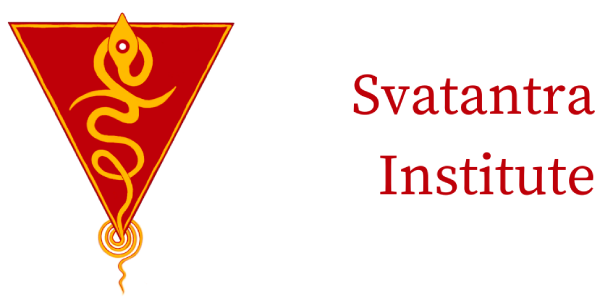The central theme of traditional tantra is the knowledge of the Self through adoration of Shakti; Sri Vidya Sadhana is one such path to the Self. Along this path of diving deeper into one’s own self, Shakti manifests in several forms of knowledge/intuitive wisdom. These forms are known as “Dasha Mahavidya”, where ten primary forms/sources of knowledge are known deeply personally and experientially.
These Mahavidyas are: Kali, Tara, Tripurasundari, Bhuvaneshwari, Tripura Bhairavi, Chinnamasta, Dhumavati, Baglamukhi, Matangi and Kamalatmika.
They are called “maha” (great) because each is a complete path and destination. Each one opens to knowledge of the remaining nine, as well as the Bindu of the Sri Yantra. It is said that devotion to and practice of any one of these will reveal our true nature and the reality of all of creation.
There are volumes written about the Dasha Mahavidyas, encompassing points of view of the yogas, tantras and the Upanishads. Scholars spend their entire lifetimes dedicated to understanding and grokking the significance of each of these Mahavidyas. My somewhat hesitant writings here thus pale in comparison. Everything expressed here is what has risen from my own practice of tantra, usually in times of intense clarity and insight that happen spontaneously. As with all of the paths of self-unfoldment, these insights will also evolve and refine.
The basis of these writings are the tantric practices of Tattwa Shuddhi and Sri Vidya Sadhana. Tattwa Shuddhi (literally, cleansing of elements) comprises of dissolution of elements corresponding to the various chakras into progressively subtler elements and then into the mahatattva (great element), Prakrithi (Shakti) and Purusha (Shiva). After internal cleansing rituals, the elements are returned to rest in the opposite direction.
In the “dissolution” part of this practice, it gradually becomes intuitively known that Shakti/Prakrithi is the witness, the first separation from the Absolute. Even when we become aware of “witnessing”, there is a sense that it is not all, or the final “it”. With deepening inquiry, one is eventually propelled to ask, “Who is aware of the witness?” and in time, we open up to the direct knowing of this awareness, that is, Purusha/Shiva. While it feels that Shakti is the “individual” witnessing principle, with a retained “I” in it, the individuality of the witness collapses as Shiva, and there is only knowing awareness that is not fixed to this and that, I and not I.
In witnessing, there remains an experience, and a knower of the experience. However, with further openings and deeper delving into this knowing awareness (Shiva, in this analogy) to be one’s true self/identity, we gradually come to see that every experience that arises is awareness itself, only seemingly separated from the knower. In every experience, when we look deeply, the “knower” is added ad hoc, in a swift play of illusion by the mind, the master magician. If we can stay with the experience, free from the mind’s interference, the knower is not seen to be separate, but known directly to have risen as the experience itself. Thus, Shakti is never separated from Shiva. If Shiva is the void, Shakti is what makes up the contents of the void, giving it form; yet, the void and the form are known via each other. Shakti is indeed Shiva, like the waves of the ocean being the ocean itself.
As in Tattwa Shuddhi, we then return to daily life, elements aligned once again as before. However, there is a distinct difference in how these elements are “held” in experience; they are transparent and not as solid/real as they did on the way up. The borders between “in here” and “out there” become blurred and disappear.
Along this path of openings and awakenings arise the Mahavidyas, setting the inner void ablaze with intuitive arisings and wisdom. They reveal themselves as the inner essence of time, vibration, space, silence, wisdom, compassion, oneness, dissolution, eternity, and beauty. Each of these powerful forms of Shakti is a complete path, leading to Shiva and back into Herself; each will bring the sadhaka to his/her knees in awe and surrender.
Image Source: Wikipedia
